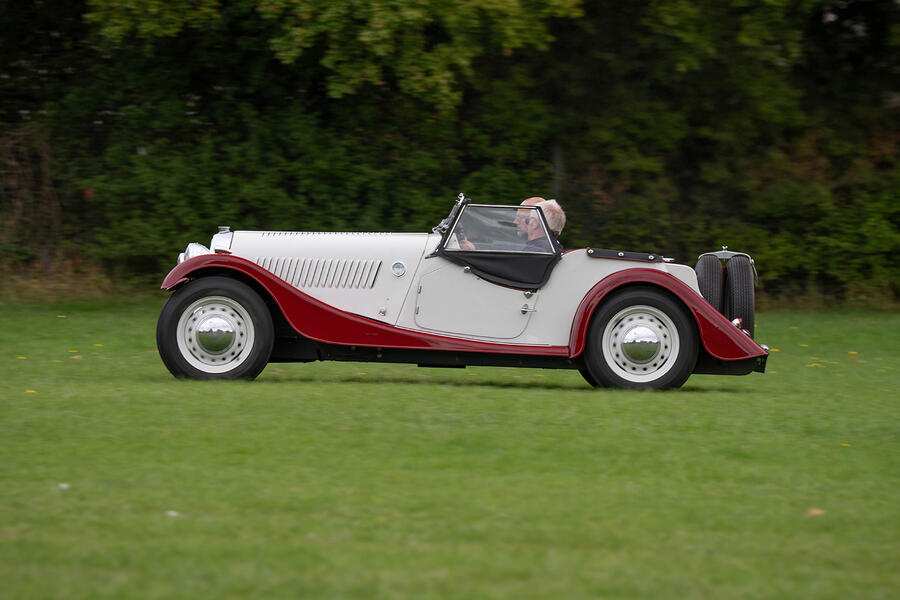Not the first time they’ve done that recently: the Super 3 was only meant to be an engine change for the 3 Wheeler. I think it’s the consistency of the Plus Four that has allowed those models to evolve. And I wonder if the diversification of the range actually reinforces the identity, the central traditional appeal, of the 75-year-old Morgan.
If you’ve always wanted a Morgan, it will look like a Plus Four. I haven’t driven an original Plus Four before, but Martyn Webb, Morgan’s archivist, has owned his 1953 car (the same as a 1950 one) for 40 years. In the mid-1950s, Morgan introduced a curved grille and a Triumph TR2 engine, which a lot of owners latterly fitted to earlier cars, so there aren’t so many original original Plus Fours like Webb’s.
See an old and a new Plus Four together and it’s notable how much taller and more ground clearance the former has. If, like me, you’re used to a Plus Four looking like the later one, it’s a surprise to note how different they are although with them back to back, you can spot those trademark wheel arches.

This is a shape that a car designer wouldn’t draw these days, as Jon Wells, Morgan’s designer of the past 17 years, tells me: there are circles and curves whose centres don’t match each other, and the wheel is offset within them “perfectly imperfectly”. But it does give the Plus Four its enduring, unique, shapely rear.